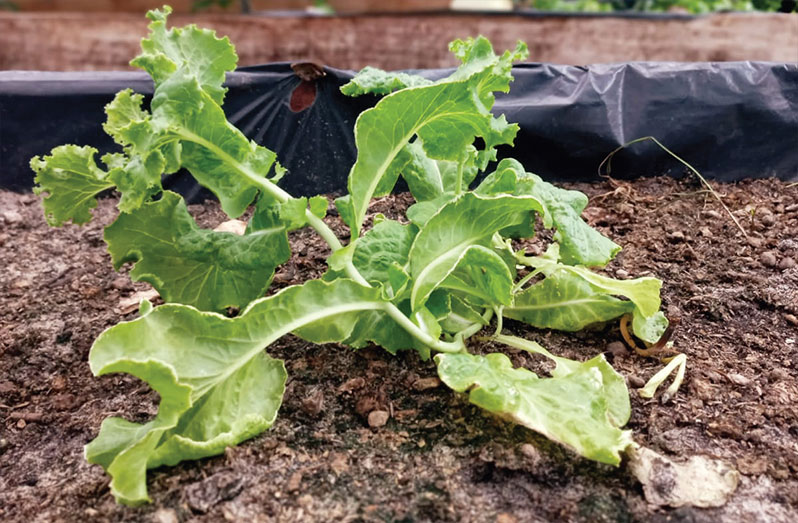WITH a hundred per cent passes in Agriculture Science over many years, Leguan Secondary School is poised to begin sending the produce of its shade house off the island in attractive packages and labels that mirror the quality of the items that the students work so diligently on.
The team that manages the shade house is still in the trial phase, trying out different crops to see just how well they’d grow. Initially, about eight months ago, it started with plants given by NAREI (National Agricultural Research and Extension Institute) – broccoli, celery, sweet pepper – and has come to include other produce to date – lettuce, tomatoes, eschalots, etc.
The intention, though, is to focus on planting one or two crops on several beds to get maximum production so as to expand the school’s marketing strategy. So far, once the school reaps a harvest, there is no problem with finding a market for the produce as students, teachers, and members of the community would line up to make a purchase.

But Head of Department, Agriculture Science, Viren Chintamani, wants to do more than satisfy just the local demand. He is currently working on coming up with a strategy to have the produce get off of the island.
“We are doing trial runs with different crops and hopefully, by the start of next year, we will be able to do something like this,” he shared with the Sunday Chronicle.
The shade house was constructed following a visit from persons of Basic Needs Trust Fund, NAREI, Ministry of Finance and other agencies, owing to the excellent Agriculture Science results at the school.
“When we started, we got plants from NAREI –– we got a bountiful harvest and after this first phase, we decided to re-boost the soil with our local organic manure, which is our local burnt paddy hull (burnt shell) and cow manure, etc. We decided to rejuvenate the soil with the organic manure because organic fertiliser is more useful for consumption and more beneficial,” Chintamani explained.

According to him, the intention is to begin exporting and to have a proper marketing strategy in place. “But the produce is not enough for the local people. As soon as we put out the message to the students that we have tomatoes, for example, for sale, or celery, it’s gone.”
The shade house, with raised beds, is designed to avoid pests, the outer walls of which are lined with nets; this also facilitates less flood-related issues. “Students do not have to toil in the sun anymore to do the practical aspects of their SBAs; they can do it right in here,” Chintamani pointed out as another benefit.
The shade house has been so effective, he noted, that when the construction was finished, two parents started one at their homes on their own. “We hope that by 2030, more persons will go with the idea. It’s a bit more expensive but the benefits outweigh this.”

The shade house in Leguan is said to be a unique structure with the higher part of the roof being located towards the windward side. It also harvests its own water.
“So, the rain water that falls on the roof goes into the tank and comes out through the drip system. When we turn on the pipe, we can leave it and do other things while the water would irrigate the soil,” Chintamani shared.
He is thankful that Leguan is one of the few schools that was chosen for a shade house and would be elated if the school can begin doing other things, such as hydroponics.
So far, with the proceeds from the shade house, the school has been able to purchase tools, seeds, and even do repairs to sections of the building and the poultry pen.
Just a few days ago, a team of Agriculture Science teachers and other representatives from several Caribbean countries visited the shade house in Leguan to observe the model and take back details to their respective countries. They were amazed at how well it was maintained.





.jpg)








